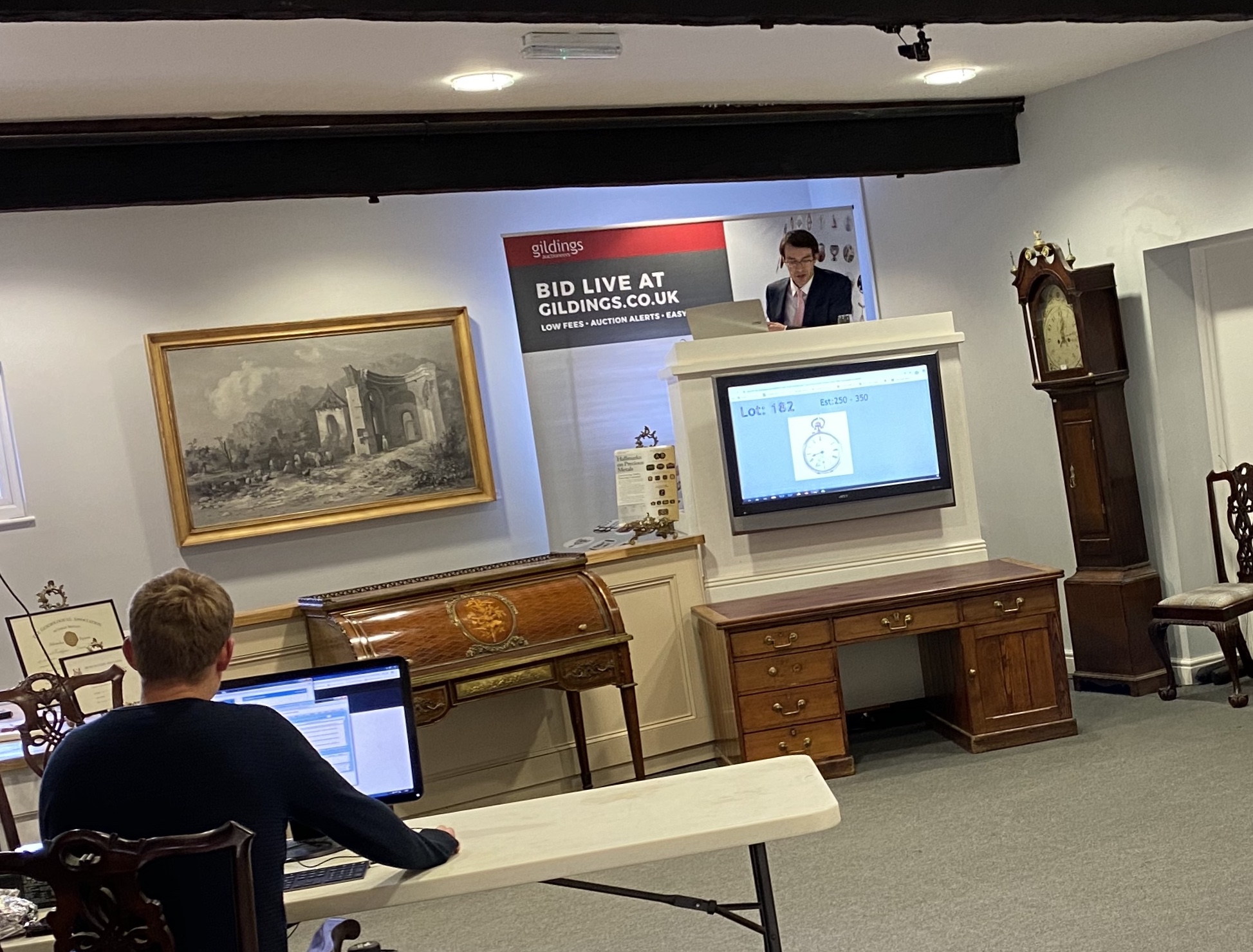A beginner’s guide to online auctions

Mark Gilding, director of Leicestershire-based Gildings Auctioneers, offers a beginner’s guide to online auctions, explaining the process of online bidding, buying and selling.
The widespread introduction of online bidding around fifteen years ago marked a seismic shift in the antique sector as a global market opened up to both buyers and sellers.
In recent months, the Covid-19 pandemic has caused a further boom in online sales. In accordance with the experience of other auction houses, Gildings’ first online-only auction saw an increase of 70% in those registered to bid online, demonstrating that demand from collectors is as high as ever.
What is involved in bidding online?
To be able to bid at an auction you need to “register” in advance. This is a simple process that is completed online or via email. Although you will need to register a bank card to bid online, there should be no requirement to use this card for payment for any successful bid.
Most auction houses provide detailed instructions on the process on their websites and will be happy to assist over the telephone if you have any queries.
On sale day, all you need to do is log in to your account and read and accept the terms and conditions. You can then click to watch the auction in a pop-up window and bid live. When the lot you are interested in is offered, you will see the increments displayed as bidding progresses.
Alternatively, you can register with a site such as www.thesaleroom.co.uk, which provides access to thousands of auctions across a vast range of collectibles.
Whichever way you choose to bid, you will be asked to accept the terms and conditions and it is important to take the time to read these before you commit to a bid. Investigate any additional fees that may apply to the hammer price, such as Buyer’s Premium charges or live bidding charges.
How can I increase my chances of success?
As all collectors know, the odds of securing a coveted item are often hard to predict, but the following can increase your chances:
- Getting your bid in early by offering the asking amount as bidding starts
- Deciding on a maximum amount and bidding without hesitation when the bidding starts to slow towards its conclusion
- Doing your research – watching auctions online is not just entertaining, familiarising yourself with the process will help you when you decide to take the plunge and bid for something yourself.
How much does it cost?
You can expect to pay anything between 3.6% – 5.95% in fees per successful bid. At Gildings, our fee is 3.6% and at the time of writing, along with many other auction houses, we are waiving this fee while restrictions make it impossible to attend a sale in person. This saving means that now is the perfect time to try online bidding.
How do I know the item is of the expected quality?
While caution when it comes to buying an expensive or coveted item you haven’t seen in person is understandable, it’s important to remember that in the auction trade, reputation is everything. Over the past fifteen years, reputable auctioneers have worked hard to put processes in place to provide detailed and accurate condition reports for a global audience.
In the current situation where no visits are possible, this has become more important than ever. All reputable auction houses can be trusted to provide clear photography and accurate estimate prices, but if you require further information, do not hesitate to ask for a more detailed condition report, more photos or even a virtual inspection via video conferencing software.
Can I consign items online?

Clearly, the ideal way to have items valued is by visiting an auction house or arranging a home visit for large or multiple items. While home visits are now resuming within social distancing guidelines, it still is not possible to visit for a valuation.
However, pre Covid-19 most auctioneers already offered an online service for provisional valuations, which is good news for the many people who have been using lockdown to get round to sorting out items they would like to consign for auction. Usually this can be done by uploading images onto the auction house’s website, emailing photos, or arranging a video call.
You may be able to arrange for the safe and secure delivery of your item to the auction house, but even if not, lockdown presents a good opportunity to get the ball rolling on the process.
Will online sales decrease after the pandemic?
Every auctioneer is looking forward to the day when viewings can resume and they can look out across a packed room on sale day. However, the increase in online activity will undoubtedly change collectors’ behaviour as they widen the scope of their collecting and discover that, far from being a soulless experience, online bidding can be dramatic and exciting. That said, most keen collectors will be as eager as the auctioneers to take a seat in the sale room again.
About the author
Mark Gilding has over 25 years’ experience working at family-owned Gildings. He oversees all Gildings’ medals and militaria valuations and conducts most of the company’s home visits



Which online auction houses are the most trusted reputable sites and how does one consign with them? Can you consign a small amount of pieces? Thank you